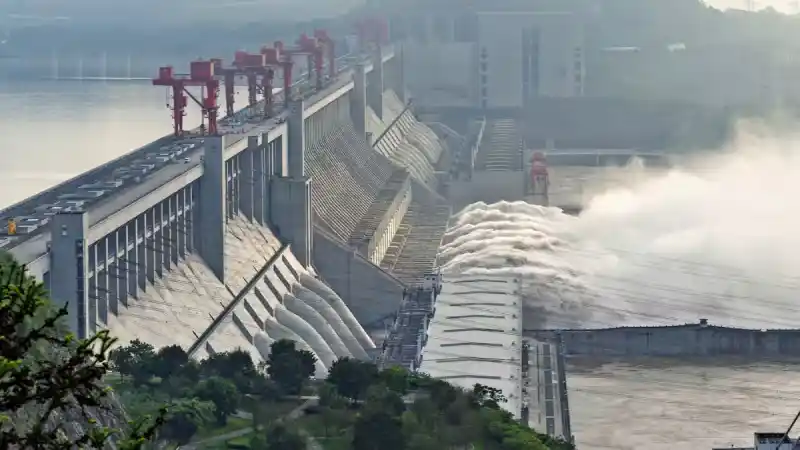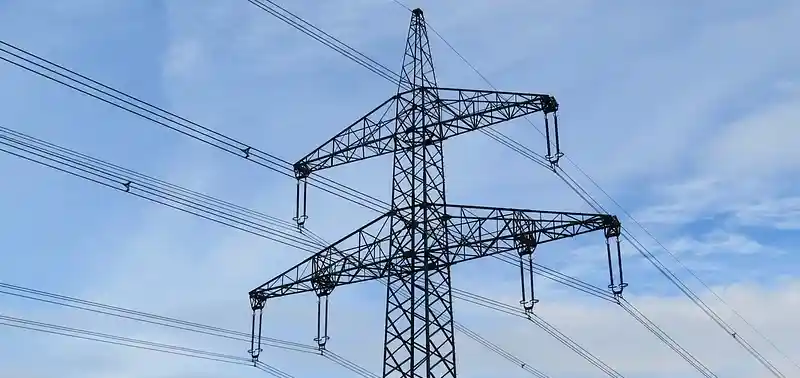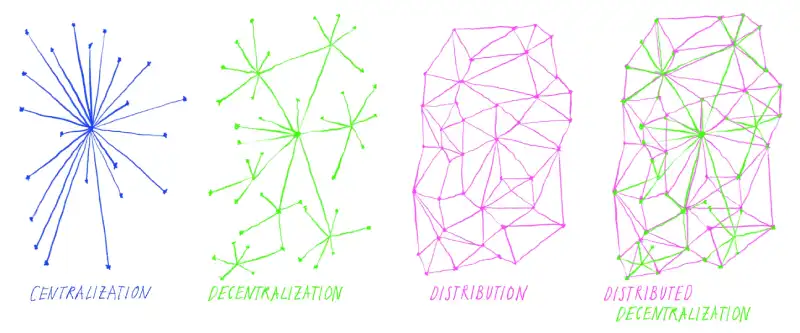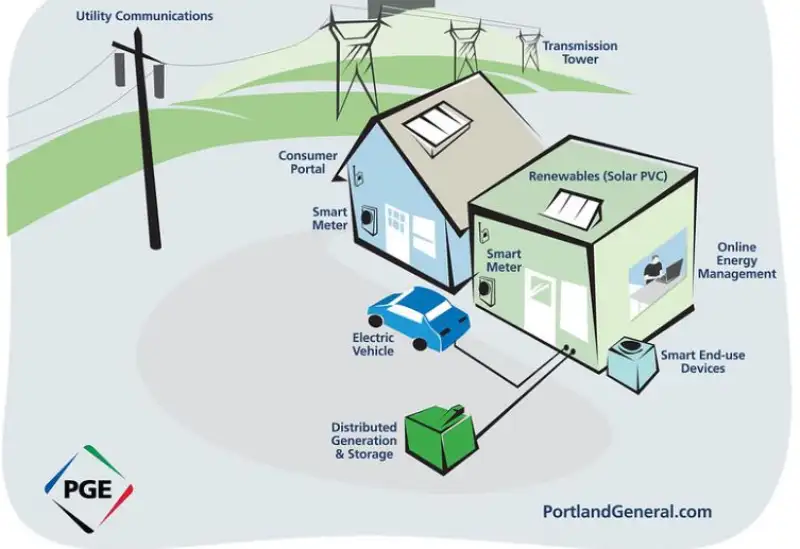Are distributed electricity grids the future?
Receiving electricity from a centralised national grid is the status quo, one that we seldom question given that it works as intended: providing us with reliable electricity 24/7.
But what if we told you there are growing concerns due to its inevitable flaws and that the future may be a distributed network made up of thousands of smart micro grids.
Community-powered; community-owned.
Contents
- Electricity has always been centralised
- Why is electricity centralisation a bad thing?
- Distributed Electricity Networks
- Technology is the enabler
- Conclusion
- External Resources
Electricity has always been centralised

Electricity generation has always been centralised because a large infrastructure is needed to produce electricity at scale and make it cheap.
The first power stations were relatively small (kW-scale coal power stations) but grew rapidly because of the rapid rise in electrical applications during the Industrial Revolution.
Electric motors, light bulbs, and elevators need reliable and cheap power, and the only way to scale electrical production and reduce costs is by building larger power stations.
The huge coal power stations of the UK were later overshadowed by colossal hydroelectric dams and the large nuclear power stations of the 60s and 70s.
But since these require very specific conditions, i.e. hydro needs large water flow and volume, and some are unpleasant to live next to (coal power stations), these power stations were mostly located far away from the populated areas with the largest demand for electricity.
The result is a large network of transmission lines that connects population and industrial centres with power stations and a localised distribution system that connects urban areas internally.
The resulting spiderweb of cables and dynamic changes in electricity supply and demand require very specific coordination to make it reliable. Therefore, centralised grid operators needed to be set up to manage this burgeoning and essential electrical network.
Power generation only remained decentralised in rural off-grid areas where landowners produced their own using micro-hydro or wind energy. This was until mass electrification campaigns connected most of these properties (at least in developed nations), therefore consolidating the role of the centralised national grid.
Nowadays, most of the electricity consumed is still purchased from large centralised power stations that are run by large energy firms and managed by national grids.
Why is electricity centralisation a bad thing?

Generally speaking, centralised power grids work as intended and provide reliable electricity to the entire area they serve.
In most developed countries that invest appropriately in their electricity network, unplanned power disruption is rare and generally results from inclement weather or unforeseeable accidents.
In our contemporary digital world, businesses and industries require a reliable electricity supply, so there is pressure on governments to manage this appropriately.
However, these centralised networks do have some hidden disadvantages.
Uncontrolled pricing
Energy firms control much of the global power generation capacity and, therefore, influence the price of electricity. These tend to operate in a for-profit yet regulated electricity market.
For example, the UK wholesale electricity prices are still heavily determined by the price of natural gas even though most of the production is now from renewables, netting incredible profits for the energy companies that operate power stations at the cost to consumers.
The 2022 energy crisis was so bad that many countries had no choice but to step in and cap prices to protect consumers. In the UK and Europe, many homes were pushed into energy poverty, and many small businesses had to close.
On the other hand, off-grid businesses and homes that relied on their own power management, generation and storage (in a distributed network!) remained largely unaffected.
Environmental concerns
Despite the recent decarbonisation of global electricity generation, two-thirds of the world’s electricity still relies on large, centralised coal, gas and oil power stations.
Many in the developed world want to reduce their carbon footprint but remain frustrated that their representing governments are not doing enough.
Many are choosing to take matters into their own hands and decarbonise their homes and businesses by themselves, setting up their own micro-grids that can be entirely renewable-based and equipped with battery systems and smart devices, which we will discuss more later.
Vulnerabilities
Contemporary power generation is very reliable and rarely has downtime due to technical failure. In fact, most power outages in a large grid are not because of the failure of power stations but because of problems with the transmission or distribution of electricity.
Currently, the length of global transmission and distribution power lines is estimated to be nearly five million kilometres long, which is enough to go to the moon and back seven times.
The grid is vulnerable to interruption for much of this length, and it only takes an accident, a storm or an earthquake to cause an interruption in this vast network, even when redundancy exists.
This is why businesses and institutions that require 24/7 electricity, such as cloud data centres and hospitals, are equipped with emergency backup power to make sure there is no interruption.
Hidden costs and efficiency
Most studies to determine the cost of electricity production fail to take into account the hidden costs of being part of a centralised electricity network.
Powerlines require constant maintenance, repairs, upkeep, and a grid management system to keep them running smoothly. This goes without mentioning the amount of power lost in transmission, which is estimated to be, on average, between 8% – 15%. Yes, that is a lot for just getting electricity from A to B.
Additionally, the network is constantly growing as new power stations become online, new homes are built, and more international interconnectors are being deployed.
And here the question becomes, who is bearing the costs?
Some are covered by the electricity generation companies and business energy suppliers who use the network, but as usual, the invisible tax is paid by average electricity consumers, who pay for all of this as part of their commercial electricity rates.
Most experts argue that large grids are already way past the point where economies of scale help to reduce costs and are simply becoming an unnecessary burden that could be mitigated by simply producing energy next to where it is utilised. I repeat, 8 – 15%.
Distributed Electricity Networks

For those who see the flaws of centralised electricity as critical, there is an alternative: Distributed or decentralised electricity grids.
Instead of having an over-arching national grid for everyone, these alternatives create smaller electricity networks that may act completely separated from the national grid, like an island or in tandem with it.
In a way, international interconnectors are turning national grids into decentralised networks within a global grid. But to keep in line with definitions, decentralised and distributed grids manage less than 10MW of electrical energy, which is roughly the requirement of 2,000 homes at peak load.
These distributed networks don’t rely on expensive and vulnerable transmission lines and can set their own electricity pricing without reliance on a centralised authority. They are as environmentally friendly as the components that are installed, with most of the micro power generation units available being renewables.
We also assume, for the sake of discussion, that contemporary distributed networks are expected to be as reliable and functional as national grids, i.e. uninterrupted 24/7 electricity.
There has recently been a revival in distributed electricity networks due to the flaws of centralised grids, but also because decentralisation has become a counter-cultural movement that opposed the centralisation of finance, power and data of the modern globalised world.
Technology is the enabler

None of the modern decentralisation movements would be possible without the recent flurry of technological innovation, particularly modular green energy generation and storage, as well as smart devices and blockchain technology.
We will explain how innovations in these two spheres have clearly laid out the foundations for a Cambrian explosion of distributed and decentralised grids.
Modular energy generation
While large power stations require custom-built infrastructure to scale, smaller power generation units can scale by aggregation and mass-producing their components in assembly lines.
Wind and solar farms are an example of scalable power output by having multiple modular generators, but modularity is a trend affecting all industries.
There’s a modular construction of homes and buildings, modular computer programming, and factory-built internet satellite modules like Starlink and OneWeb that can scale by having hundreds of cheaply manufactured modules.
This price reduction is exemplified in solar panels, which have decreased in price by about 10x in the last decade alone.
This means that individual households, businesses, or small communities can now purchase electricity generation at rates that are competitive with large-scale power generation, particularly when government incentives are present, like in countries like the Netherlands and Germany.
In any case, here is a non-exhaustive list of modular, factory-made electricity generation options currently available for distributed networks:
- Nuclear SMRs and Micro-reactors.
- Containerised Solar Power
- Airbourne Wind Energy systems
- Bladeless Wind Energy
- Micro Wind Turbines
- Floating solar panels
- Agrivoltaics
- Geothermal power (NOT modular, but often small-scale)
Modular electricity storage
Electricity storage is an essential part of any grid, as power generation cannot always meet demand.
Small-scale electricity storage has existed for a long time in the form of diesel generators, which use imperishable diesel fuel as a form of electricity storage. These still work, but fluctuations in energy prices, a finite resource, and upcoming carbon premiums will make this an unviable option to use exclusively for emergency use.
Many off-grid DIYers have also used car Lead-acid batteries to store electricity for their off-grid premises for a long time, but these are being rapidly replaced by the more efficient, long-lasting, and cheaper Li-Ion batteries, which are fully modular and can also scale by aggregation.
These are, however, not the only options, with many technologies being rapidly developed for small-scale distributed networks:
- Sand batteries that can store heat for many months.
- Gravitational batteries
- Flywheels
- Pumped-Storage Hydro (PSH) in a tank
- Compressed air energy storage in tanks
When systems with large electricity storage options are also connected to the grid, electricity arbitrage is possible to earn a profit.
This involves charging batteries at off-peak times when grid prices are low and then selling any excess power stored in the batteries to sell electricity to the national grid at peak times, potentially yielding a profit.
Smart devices
Even though a distributed grid is simpler than a large-scale centralised grid, its components still have a complex relationship that requires live management and optimisation.
This is especially complicated when considering that intermittent renewables have variable power outputs that need constant regulation and monitoring.
Demand is also constantly fluctuating due to the large number of electrical devices that are constantly switching between ON and Idle (they rarely come OFF!)
Fortunately, the rise of powerful hardware and smart algorithms means that most of the work can be done by smart electricity devices. These devices are constantly gathering data on the state of the grid and re-balancing it accordingly.
It can also alert users if there are any problems that require manual input, such as changing a battery or cleaning solar panels.
Blockchain
In order for smart devices to function, they need to be able to store and access the data that is being collected. The more comprehensive the data, the better it can optimise the grid, particularly when considering machine learning.
In this context, data becomes power and potentially the source of disagreements within a distributed community of users. People’s habits can be inferred from their data, and it is potentially a vector for privacy breaches.
In comes blockchain: a decentralised database that is fully owned by its stakeholders (and not a centralised data keeper) who have governance rights depending on their stake in the network. The database can be specifically designed to preserve privacy for its users.
Data stored in blockchains are also immutable, which means that it cannot be eliminated, which makes it brilliant for due diligence, particularly if selling electricity back to the grid becomes a form of revenue for the distributed network.
And last but not least, it opens the door to p2p electricity trading, in which different actors within this distributed grid can automatically and fairly trade electricity generated or stored within this network, providing unprecedented flexibility.
For example, each home has distinct micro-generation or storage capabilities in a distributed network for a community of 2,000 homes. Those who have invested in power generation and storage can essentially sell their services to other who have invested less in a fair and open manner, with price discovery happening proportionally to the supply and demand of the grid: free market at its best.
Especially considering that researchers are already looking for ways of using your charging EV as a source of energy storage for your distributed grid. If this isn’t energy efficiency, I don’t know what is!
Conclusion
The benefits of a distributed electricity grid are clear. There is:
- Grid resilience: There are few transmission cables to break.
- Efficiency: You won’t lose 8-15% of your energy in transmission.
- Carbon Footprint: You decide how close to net zero you want to be.
- Pricing: The price of your electricity is proportional to your investment, not global events.
- Smart: Technology means that you can build a highly optimised, dynamic grid is very efficient.
- Blockchain-compatible: Safe, open and privacy-preserving data is possible.
So what are we waiting for?

